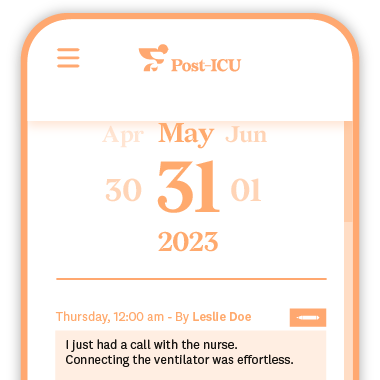In recent years, patient experience has become a critical aspect of healthcare quality. As patients become more informed and empowered consumers, the quality of their interactions with the healthcare system has become more significant. Providing an excellent patient experience not only improves clinical outcomes and patient satisfaction but also has significant financial implications for healthcare organizations and impacts their reputation and trust among patients.
Patient experience and satisfaction are influenced by a complex web of factors, not all of the same importance. Let’s explore the factors that have been shown to have a significant influence on patient satisfaction.
Why Patient Experience Matters
Quality of Care Correlation
Studies have shown a strong correlation between positive patient experiences and improved clinical outcomes. A systematic review1Tingyu, G. U. A. N., Xiao, C. H. E. N., Junfei, L. I., & ZHANG, Y. (2024). Factors influencing patient experience in hospital wards: a systematic review. found that patient experience was positively associated with patient safety and clinical effectiveness across a range of disease areas and healthcare settings. A report on the value of patient experience demonstrated that an increase in the number of respondents rating their hospital experience as “excellent” is associated with a decrease in readmission rates for heart failure, heart attack, and pneumonia.
Financial Implications
Patient experience has a direct impact on hospital reimbursement and revenue. In the United States, the Hospital Consumer Assessment of Healthcare Providers and Systems (HCAHPS) survey is used to measure patient experience, and the results are publicly reported. Hospitals with higher HCAHPS scores receive higher reimbursement from the Centers for Medicare and Medicaid Services. Additionally, a report demonstrated that hospitals with higher patient experience scores had higher profit margins.
Reputation and Trust
Positive patient experiences are essential for building hospital reputation and trust. In an era of increased transparency and online reviews, patients are more likely to choose hospitals with a reputation for excellent patient experience. A study2Liu, S., Li, G., Liu, N., & Hongwei, W. (2021). The impact of patient satisfaction on patient loyalty with the mediating effect of patient trust. INQUIRY: The Journal of Health Care Organization, Provision, and Financing, 58, 00469580211007221. found that hospitals with higher patient experience scores had higher levels of patient trust and loyalty.
Key Factors Influencing Patient Experience
1. Communication and Interaction
Clear, compassionate communication between staff and patients is crucial for a positive patient experience. Studies have shown that effective communication leads to higher patient satisfaction, better adherence to treatment plans, and improved health outcomes.3Ferreira, D. C., Vieira, I., Pedro, M. I., Caldas, P., & Varela, M. (2023, February). Patient satisfaction with healthcare services and the techniques used for its assessment: a systematic literature review and a bibliometric analysis. In Healthcare (Vol. 11, No. 5, p. 639). MDPI.4King, A., & Hoppe, R. B. (2013). “Best practice” for patient-centered communication: a narrative review. Journal of graduate medical education, 5(3), 385-393.
Furthermore, communication among the hospital staff is equally important. Coordination among healthcare providers is essential for ensuring a seamless patient experience. When providers communicate effectively with each other, patients receive more consistent information and experience fewer delays in care. Hospitals with strong care coordination practices often report better patient satisfaction scores, suggesting a link between coordinated care and positive patient experience5Elliott, M. N., Adams, J. L., Klein, D. J., Haviland, A. M., Beckett, M. K., Hays, R. D., … & Schneider, E. C. (2021). Patient-reported care coordination is associated with better performance on clinical care measures. Journal of General Internal Medicine, 36, 3665-3671.
2. Staff Behavior, Attitude and Responsiveness
Physician’s behavior significantly moderates the effect of health care services on patient satisfaction.6Manzoor, F., Wei, L., Hussain, A., Asif, M., & Shah, S. (2019). Patient Satisfaction with Health Care Services; An Application of Physician’s Behavior as a Moderator. International Journal of Environmental Research and Public Health, 16. In general, studies show that healthcare providers’ behavior, attitudes and responsiveness contribute to a positive perception of care quality.
Rapid and effective responses can enhance patient satisfaction, as patients feel valued and cared for when their needs are addressed promptly. When healthcare providers are visibly present and readily available, patients are more likely to feel supported and secure.
3. Physical Environment
The physical environment of a healthcare facility can have a significant impact on patient perceptions and satisfaction. Ambiance, service delivery, interior decor, and cleanliness significantly influence patients’ trust and satisfaction in general practice clinics7Ai, Y., Rahman, M., Newaz, M., Gazi, M., Rahaman, M., Mamun, A., & Chen, X. (2022). Determinants of patients’ satisfaction and trust toward healthcare service environment in general practice clinics. Frontiers in Psychology, 13.
Noise levels are also an important environmental considerations for patient satisfaction. Even mild noise levels can increase stress levels, heart rate, blood pressure and impact mental health. Interventions to reduce noise levels, such as staff education, visual noise alerts, and architectural redesign, have been shown to improve patient satisfaction with the noise environment during hospitalization.
4. Emotional Support
Recognizing and addressing patient anxieties and mental health concerns is essential for providing a positive patient experience. A strong relationship exists between the degree to which staff addresses emotional/spiritual needs and overall patient satisfaction.8Clark, P., Drain, M., & Malone, M. (2003). Addressing patients’ emotional and spiritual needs. Joint Commission journal on quality and safety, 29 12, 659-70. Additionally, emotional support in the hospital setting has a significant relationship with patient’s trust in physicians, promoting patient satisfaction and improved health outcomes9Ommen, O., Thuem, S., Pfaff, H., & Janssen, C. (2011). The relationship between social support, shared decision-making and patient’s trust in doctors: a cross-sectional survey of 2,197 inpatients using the Cologne Patient Questionnaire. International Journal of Public Health, 56, 319-327..
5. Patient Involvement in Care
Encouraging patient participation in their care through shared decision-making can improve the patient experience. Studies have shown that greater patient involvement in healthcare decision-making improves satisfaction with care, with shared decision-making achieving the highest satisfaction rating.[/mfn]Birkeland, S., Bismark, M., Barry, M., & Möller, S. (2021). Is greater patient involvement associated with higher satisfaction? Experimental evidence from a vignette survey. BMJ Quality & Safety, 31, 86 – 93.[/mfn]
Improving patient involvement in care can be achieved through pre-visit preparation, empowerment and diversity strategies, active participation in decision making, and collaboration with patient organizations.
Making Patient Experience Better
The Role of Technology
Various technological and digital solutions can influence patient experience, including electronic health records (EHRs), telemedicine, patient portals, and ICU diaries. Innovative digital solutions are making healthcare more efficient, saving patient and provider time, and making care more available.
Cultural Competence and Sensitivity
The US is a multicultural country and it’s essential for healthcare staff to understand cultural differences and provide culturally competent care. This is the only way all communities can get the care they deserve and have a positive experience and high satisfaction. Cultural sensitivity training improves knowledge and attitudes among healthcare providers, leading to positive health outcomes for minority patients without increasing healthcare expenditures.10Majumdar, B., Browne, G., Roberts, J., & Carpio, B. (2004). Effects of cultural sensitivity training on health care provider attitudes and patient outcomes. Journal of nursing scholarship : an official publication of Sigma Theta Tau International Honor Society of Nursing, 36 2, 161-6.
Measuring Patient Experience
Measuring patient experience is crucial for identifying areas for improvement and tracking progress over time. Tools such as the HCAHPS survey and data from various technologies can provide valuable insights into patient perceptions and satisfaction. By regularly measuring patient experience and using the data to inform quality improvement initiatives, healthcare organizations can continuously enhance the patient experience and improve clinical outcomes. But it’s not enough to focus on broad brand metrics; a more nuanced approach is needed to capture the full scope of patient interactions. Brian Carlson, the Vice President of Patient Experience at Vanderbilt University Medical Center, shared his expertise:
I think the main challenge lies in organizations using brand experience metrics like Likelihood to Recommend as operational metrics to gauge patient experience. Patient experience is the sum of all interactions, and the goals set should be clear and measurable by front-line-staff. While brand metrics are important, they should not be the sole focus if the goal is to improve the patient experiences. It’s important to measure the patient experience from all touchpoints. For this purpose, using question level metrics and patient comments about their experiences is a more effective way of providing understandable metrics to front-line-staff.
Brian Carlson, Vice President of Patient Experience at Vanderbilt University Medical Center
Post-ICU Digital Diary: A Tool For Patient Experience
The Post-ICU Digital Diary offers hospitals valuable support in improving patient experience, particularly in the ICU setting.
- A communication channel: Accessible 24/7, it allows staff to share updates with families anytime, providing reassurance through timely communication.
- Staff behavior: Staff contributions to the diary give families insight into the care their loved ones receive, building trust and confidence in the process.
- Emotional support: Journaling helps families cope during the ICU stay and aids patients’ emotional healing afterward by filling memory gaps.
- Involvement in care: The diary engages families in recovery, creating a shared narrative that supports psychological healing and opens conversations.
In addition to supporting these critical factors of patient experience, ICU diaries provide many other benefits. Reach out to our team to learn more about introducing a diary into your ICU.





